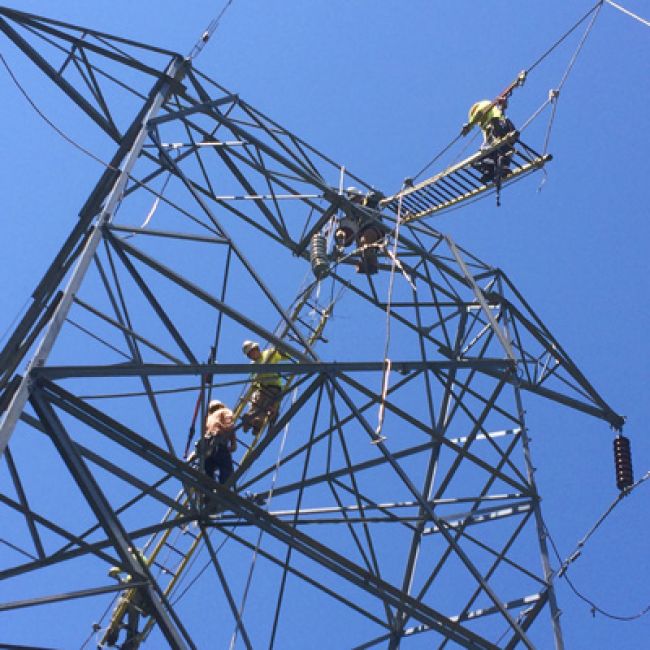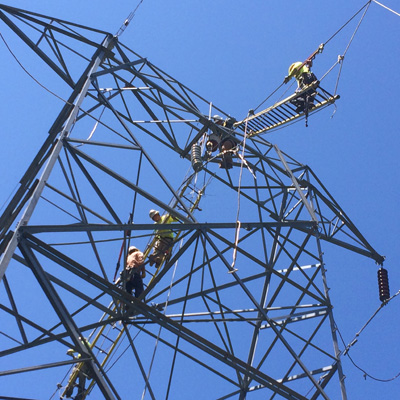
Emergency Response Training for Electric Utility Workers

In my 40 years of electric utility experience, I have investigated and documented dozens of work-site incidents that required immediate emergency medical response from a crew. One pattern has become clear after debriefing workers who have rendered assistance at a scene: Workers who responded well to rescuing their co-workers used effective communication and competent delivery of job-site first aid, including CPR. Time and again, nearly all workers involved in successful emergency responses said, “I was just doing what I was trained to do.”
Looking back on the history of the electric utility industry, competent emergency responses have not always occurred. In the late 1970s through the early 1990s, the utility I worked for suffered a series of fatal and serious accidents. Most were electrical contacts, but the list also included arc thermal exposures, falls from poles and traffic accidents. With each incident, we learned about the value of providing appropriate emergency training for the work performed as well as the value of refining our annual emergency response training drills.
Emergency Training Requirements
It is important to understand the OSHA requirements in 29 CFR 1910.269(a)(2)(i)(B), which states, “Each employee shall also be trained in and familiar with any other safety practices, including applicable emergency procedures (such as pole-top and manhole rescue), that are not specifically addressed by this section but that are related to his or her work and are necessary for his or her safety.”
Most employers who perform work under 1910.269 and 1926 Subpart V understand the requirement to train workers in emergency procedures. Having trained lineworkers and splicers in annual retraining classes for over seven years, the question I have been asked about most frequently regarding this subject is, why do we have to retrain workers in emergency procedures every year?
Additional training or annual retraining is required for a number of reasons. The requirement for additional training on emergency procedures can be found at 1910.269(a)(2)(v)(C), which states: “An employee shall receive additional training (or retraining) if he or she must employ safety-related work practices that are not normally used during his or her regular job duties. Note to paragraph (a)(2)(v)(C): The Occupational Safety and Health Administration considers tasks that are performed less often than once per year to necessitate retraining before the performance of the work practices involved.”
Whether it is new or refresher training on emergency procedures, the training generally takes the form of pole-top and bucket truck rescue drills. Add a CPR/AED/first aid refresher or recertification and you’re done, right?
Not so fast. Responding to an emergency on the job site often is a much more complex series of actions. Effective performance during a real emergency is much more likely to occur when workers practice a set of individual actions executed in the correct order. Let’s categorize these actions into groups to create a practice drill that contains the critical steps.
The Rescue
The rescue itself has the most variables and hazards. Each employer must develop rescue techniques that best suit their type of work, working conditions and available resources. Specific practices – such as securing one of the victim’s hands to prevent the victim’s arms from rising during descent, the use of a screwdriver as a rigging point, and using lines and equipment rated for human rescue – are not within the scope of this article. However, some conditions and circumstances can contribute to the realism of the drill and greatly enhance worker performance in a real emergency. Just as in first aid/CPR training, the rescue should begin by determining if the scene is safe. The number one objective of every rescue is not to create any new victims.
Begin by holding a job briefing to discuss the emergency response information. The use of an actual job briefing form helps keep the drill realistic. For energized work, review parameters and conditions necessary to de-energize the circuit – either remotely or by local switching – in the event of an emergency, just like on a real job. Before beginning the rescue drill, a thorough review of simulated exposed electrical hazards should be conducted, and necessary PPE and other protective equipment should be used during the drill.
The use of ropes to simulate underbuilt construction, which is common in urban environments, encourages skills in maneuvering the victim around obstacles. Having a discussion about good rigging – and not just cutting all obstacles in the clear – encourages good decision-making and takes public hazards into account.
Be sure to consider if workers other than lineworkers and splicers need to practice more specialized rescues. Vault, trench and tree rescue drills should be conducted if workers have exposure to those environments.
The Call for Help
Performing rescue drills and practicing emergency communication help to ensure that, during a real emergency, the correct assistance is requested and arrives where it is needed. Again, following the direction of first aid/CPR training, a specific worker should be directed by name to make the emergency call to either an internal dispatcher or to 911, according to the employer’s policy. The worker assigned this task should use the job briefing form to reference the work location and cross streets. During the training drill, a script should be used so that the instructor leads the designated worker to answer questions in an order that is used by the internal or 911 dispatcher. The designated worker should attempt to answer all questions based on available information. Using a hand-held radio or cellphone makes this drill feel real.
A typical emergency communication script should read something like this:
Dispatcher: 911, what is the nature of your emergency?
Possible worker answers: We have had an electrical contact on our utility crew. Or, an employee has fallen from a utility pole. Or, we have a worker with signs of heat stroke.
Dispatcher: Can you state the location of your emergency?
Possible worker answers: 11762 Truesdale Street, at the corner of Glen Oaks Boulevard. Or, 200 yards past mile marker 2.2 on Old Route 12 Road.
Additional questions that emergency dispatchers may ask include:
- Is the victim conscious?
- What is the victim’s height and weight?
- What is the victim’s sex and approximate age?
It is critical that the worker who makes the emergency call listens carefully to the dispatcher and responds clearly. If a radio is used, the worker must remember to unkey the microphone in order to hear the dispatcher.
The worker designated to make the emergency call also should send another worker, if available, to stand by the cross street to direct the emergency services responders to the victim.
Emergency First Aid
CPR/AED and first aid recertification are recommended every two years by the major U.S. health and preparedness organizations. The training is a comprehensive four- to eight-hour class plus a proficiency demonstration in CPR/AED and first aid skill. This leaves an opportunity to incorporate first aid training in the non-recertification years.
After the victim has been rescued and situated in a safe place, and after a call for emergency assistance had been initiated, one worker should access the victim and another should retrieve emergency equipment, such as a first aid kit, an AED and a burn gel kit. The instructor should use the first aid/CPR/AED training book provided by the certifying organization to call out symptoms and have the rescuer call out corresponding conditions and appropriate responses. The rescuer should begin by stating the universal precautions, such as gloves and eye protection. The instructor should provide lots of coaching to ensure a positive and cooperative environment.
Summary
The goal of a consolidated emergency response drill is to promote effective team responses under stressful conditions. Drilling and practices should be realistic and have variables that give workers the opportunity to make mistakes and learn from them.
An important aspect of a consolidated drill is workers’ realization that with experience and practice, everyone on the crew can work together to address situational needs. And by understanding the critical steps required, instructors also can adapt to the challenges of different work conditions and situations.
About the Author: Mark Werndorf, CUSP, is an associate senior consultant with SET Solutions (https://setsolutionsllc.com) who has over 38 years of electric power experience. He completed his apprenticeship as a lineman/splicer and previously worked as a journeyman, senior journeyman/troubleshooter, line foreman and safety supervisor for one of the largest publicly owned utilities in the U.S.

